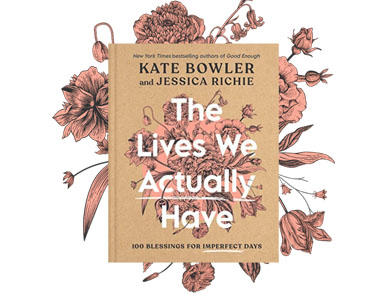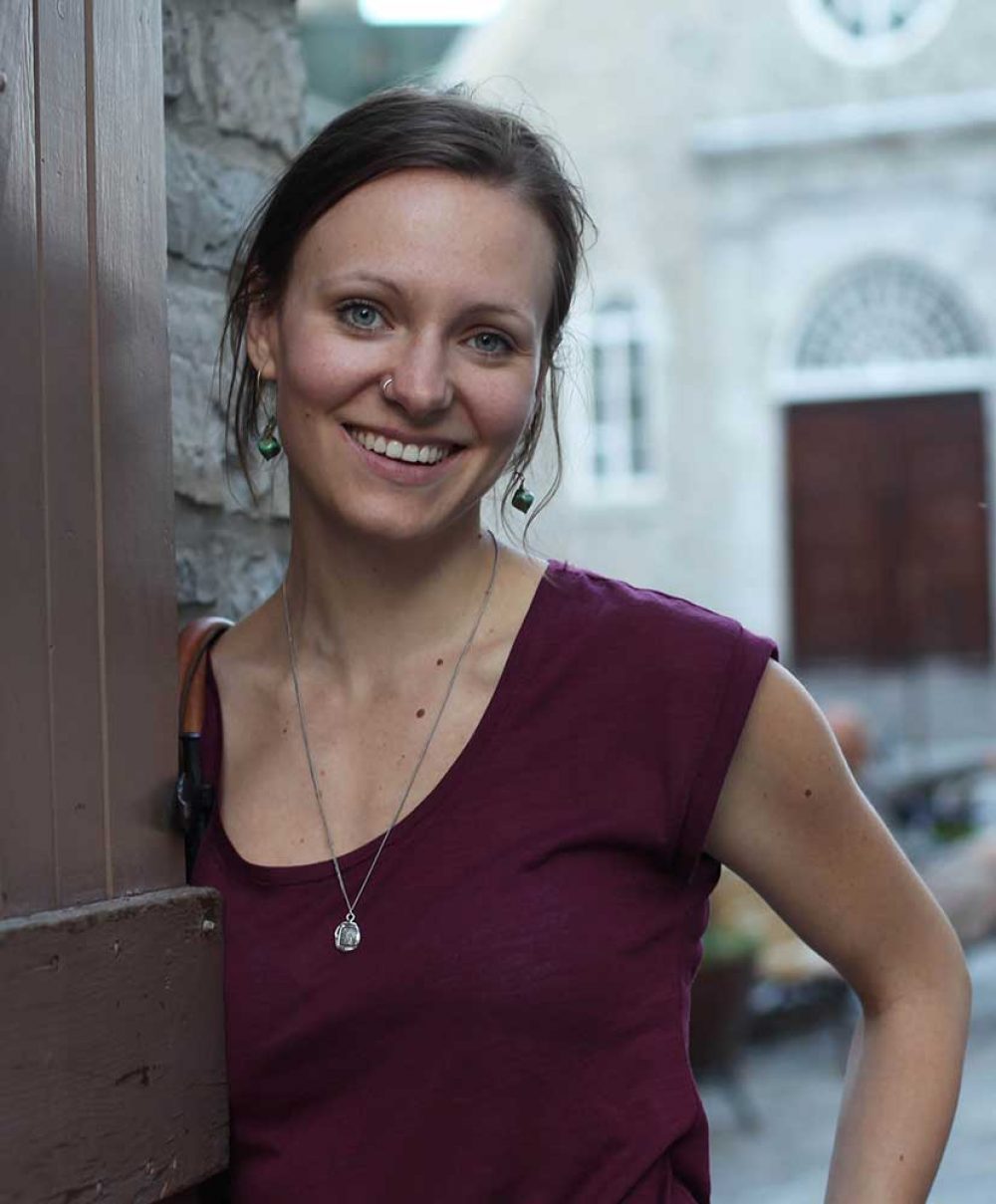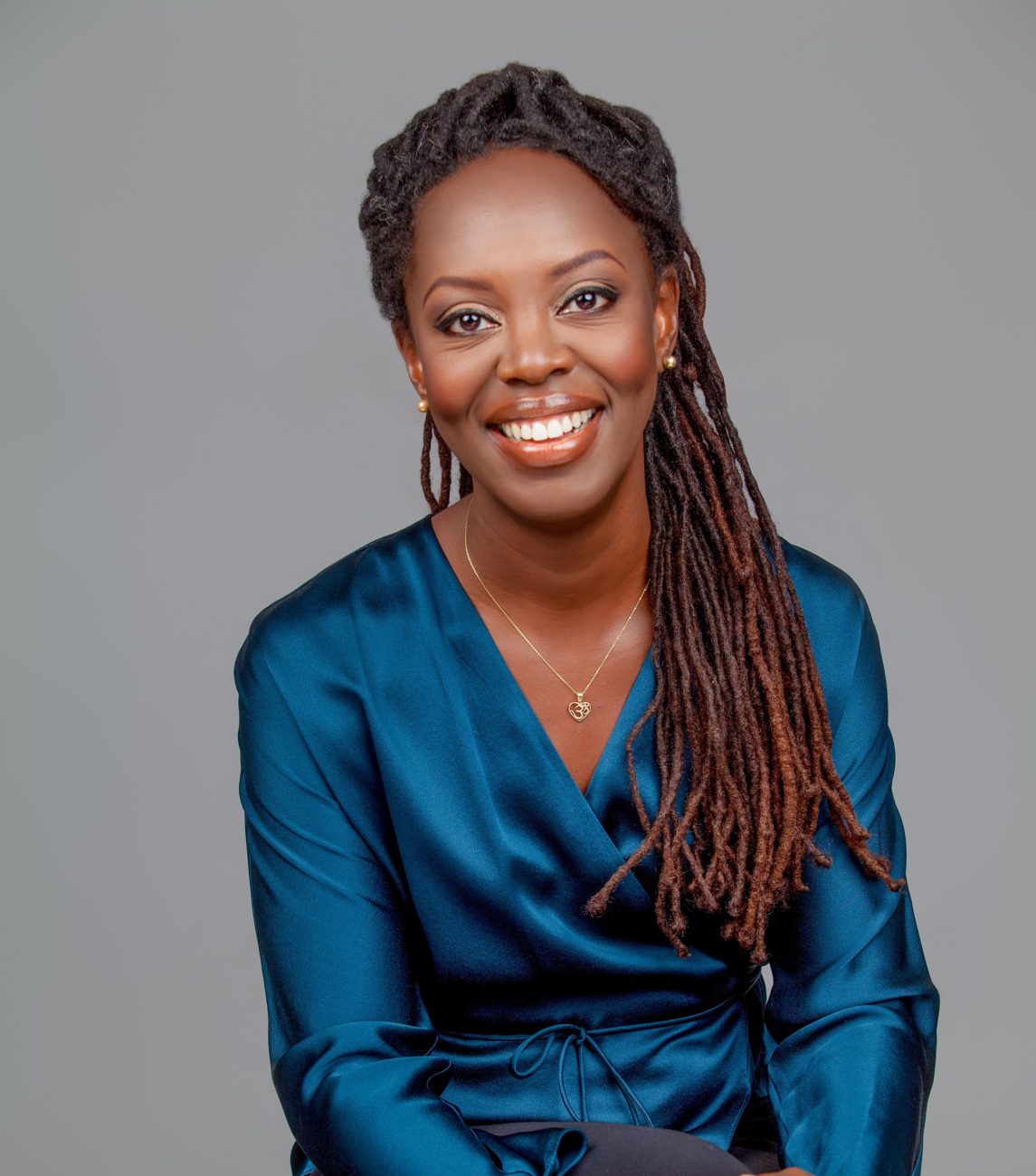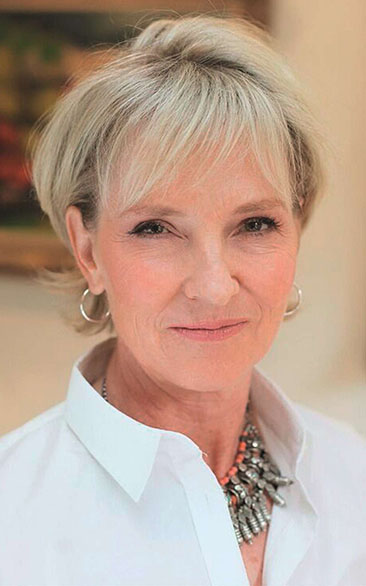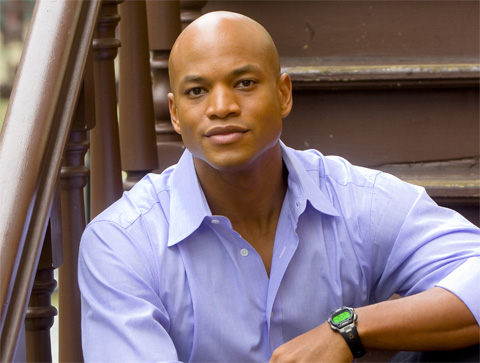Kate Bowler: Hi, I’m Kate Bowler, and this is Everything Happens. Look, the world loves us when we are good, better, best. But this is a podcast for when you want to stop feeling guilty that you’re not living your best life now. We’re not always living the plotline of The Bachelorette. I used to have my own delusion of living my best life now. I’m a Duke professor, wine and cheese enthusiast, wife and mom. Instagram gold. Then I was diagnosed with stage four cancer. That was four years ago and I’m still here. And now I get it. Life is a chronic condition. The self-help and wellness industry will try to tell you that you can always fix your life. Eat this and you won’t get sick. Lose this weight and you’ll never be lonely. Believe with your whole heart and God will provide. Keep this attitude and the money is yours. But I’m here to look into your gorgeous eyes and say, hey, there are some things you can fix and some things you can’t. And it’s OK that life isn’t always better. We can find beauty and meaning and truth, but there’s no cure to being human. So let’s be friends on that journey. Let’s be human together.
K.B.: I only know what it means to be embodied when I talk about my kid. Zach is six years old and he lives in his own skin and bones. The other day, he spent 10 minutes deciding which stuffed animal needed to sleep in his bed because it, quote, smelled like snuggles. When people say dance like no one is watching, I think that they’re talking about kids. Zach dances like absolutely no Mennonite should. Some people, when we watch them, remind us, oh, I don’t move like that anymore. I don’t feel like that anymore. Some kind of obstacle or fear is preventing us from being in our own skin. Today, we’re going to talk about fear not in the abstract, but what it feels like in our own skin. What very real obstacles prevent us from moving and breathing and feeling like we are so connected with the body we were born with? What prevents us from turning our feel and taste and smell into real life body trust? So let’s dig into fear. Can we avoid it? How do we live inside it? What does it do to us? How do we get from our brain back into our bodies?
K.B.: Today I’m speaking with one of the most emotionally intelligent people I know. Hilary McBride. Hillary is a therapist, researcher and writer and recently PhD. Congratulations to her. She specializes in trauma, spirituality, the mental health and women’s relationships with their own bodies. She hosts thoughtful podcasts like the Liturgists and Other People’s Problems, and is the author of Mothers, Daughters and Body Image: Learning to Love Ourselves As We Are. Hilary, I am so glad to be talking with you today.
Hillary McBride: I’m so happy to be here, Kate.
K.B.: Well, I remember the very first joke we ever made. I’m positive you remember this, too. We were both speakers at the same lovely event in Kansas City, aptly titled Fearless About Conquering Fear. And one of us, I don’t remember who it is, leaned over and said, “I don’t know about you, but I’m giving an extremely pro fear talk”.
H.M.: I think maybe even one of my first slides and points in my talk was like, fear is good. Oh, good. And I remember thinking, did they know? Did they know who they were coming to ask? You plus me.
K.B.: So why is it so hard for people to be OK with being afraid?
H.M.: Yes, fear is naturally uncomfortable. It’s meant to be. Comes with all of this and really intense physiological activation that tells us what’s happening right now isn’t cool and we should probably get out of here. Because we’re bio psychosocial, because we have these bodies and there’s all of the psychology that goes along with that. And we’re in a social context. We also have to look at the story, the socio cultural discourse around emotions. And really, when you think about fear. There’s a few compounding narratives that make it really difficult for us to feel like it’s okay socially to be with it. Fear makes us vulnerable. We’ve often been told that if we’re afraid we’re weak. Sometimes we’ve even been told if we’re afraid, we don’t trust, trust, God trust the people around us enough. And so we see fear as the antithesis to these ways of belonging around us. And when you get that discomfort mixed with the conditioning to say, don’t go there, we got a pretty compelling case, it’s not a place we’re going to want to hang out.
K.B.: Yeah, yeah. I always thought that was such a funny, in just in relationship to fear. I thought that trust was such a it was a word I didn’t feel like, I didn’t have any access to it anymore, because the question for me was like, you know, so I’m I’m really sick. People are telling me to trust God. And I remember thinking, like, trust God to do what exactly?
H.M.: Yeah. Like, finish that sentence.
K.B.: Yeah. What’s the relationship I’m I’m having here? Because I know what it’s like to love God. I know what it’s like to feel loved by God. But like I as far as I can tell, we have not entered into a negotiation. Or if we have like I have not been notified of the terms and conditions, if it means I get to live great. I’m so happy to trust God. But if I don’t, I’m going to have some more questions.
H.M.: You’re right. And trust God to do, to do what? And often we finish that sentence with some of the work that I think is is really resonant in your writings. But this idea that we’ll get the outcome that we want, so we’ll trust God, that we’ll get what we decided God would give us.
K.B.: Yeah, that is one of the best sentences ever uttered to me.
H.M.: It doesn’t quite add up like faith? Yes, like there is this thing that’s moving. That we can’t quite see. And we know it’s taking us towards justice and wholeness and fullness. Yeah faith. But yeah, trust, trust what? What does that mean?
K.B.: Yeah that’s right. It does like hearken back to us a contract like that one of the stories about being a faithful person or even more generally like. If you’re a good person or a spiritual person or a compassionate person, and if you manage fear that that you are entitled to the benefits of that and that that will mean that you get to skip the harder stuff.
H.M.: I mean, it it would be nice.
K.B.: I just haven’t found it to be true. Maybe I should be a whole sort of heresy wall with just like things that would be very nice if they were true.
H.M.: Oh, I’ve got, I’m ready when you’ve got that there. You call me first.
K.B.: I will. We will start that religion together.
K.B.: There is, though, there is an especially pernicious cultural myth that says that our minds are the most powerful thing about us and that if we just think positively or choose joy, all will be well. But you really emphasize embodiment as a practice. Like you’re one of the people who’ve actually tried to talk me into having a body. So I don’t even know how to like start that work if what we trust ourselves most is our is our brains?
H.M.: OK, so let’s use our brains to build the case for our bodies. How about we do that? That’s what like the, I don’t know. Is that backdoor? Is that front door? It feels a little bit manipulative, but we can go with it. And so when I talk about embodiment, what might be helpful for me to clarify that for a moment because like what does that mean? People say it all the time. I’ve seen it recently used to like sell bath products. I’m not. sure how that works.
K.B.: Which I am buying. Please continue.
H.M.: And so embodiment really is just the way you are. And it’s the fact that you are a body and not just that you are a mind that has a body or probably one of the more academic definitions that I like is the subjective experience of being a body in a social context. So you’re not just thinking as a being, but you as a being are embodied your your incarnate. And you’re not just incarnate in isolation, but in a space where there are rules about how to be a body, which bodies are good bodies, what it means to be healthy. And everybody else telling you the shoulds around your body. One of the things that really strikes me is just that if we look at the data that gets exchanged between brain and body, we see that for every one neuronal message going from your brain down into your torso, your limbs right down to your toes and your fingers for every one going brain to body, there’s nine going body to brain. So we start to see this real imbalance and we’re like Ok, we’re really thinking that we are thought based creatures but what is actually shaping those thoughts? And we start to develop this case that the human is actually a bottom up process, as in like all of this flesh, the stuff that we try to ignore, control and diet away, it’s actually shaping how we think. And then we can look at other things like how posture impacts, mood. You actually shift your posture and it sends a message from your your nervous system and all of this flesh and the muscles and the veins and everything and your heart beating and how your shoulders or how it moves up into your brain. And that actually shapes the way you think. So instead of thinking being in some ways the most important part of our humanness, actually thinking tends to be the dumping ground of everything that’s happening behind the scenes.
K.B.: It’s such a wonderful and vivid image Hillary, I like that. As the dumpster fire of what else is happening?
H.M.: What gives some really compelling evidence about why just using thought change based methods of therapy, aren’t sufficient for changing the felt experience we have about ourselves because we’re trying to go top down. And it’s like fighting this stream of neurological information that’s actually moving bottom up. And so when we think about fear, what we’re often trying to do is use our thinking to control and shame, essentially shame our body away from doing what our body is trying to do to take care of ourselves. Actually, the brain developed as a body survival organ, not the other way around. And so if we’re noticing what’s going on upstairs in our thinking about fear, we might need to start changing the narrative we have about fear so that we give ourselves permission to go towards it. So you can have a different relationship with it. And then because fear is in this in our body, it’s there. It’s kind of like if we’re trying to get rid of fear, it’s akin to trying to get rid of swallowing or digestion. It’s like hardwired into our neurobiology. When we can make friends with it, then we can actually get curious and do things differently and have a different relationship in a way that it’s it’s not controlling us because we’re actually trying to get away from it. But we’re in this, like, dance where we’re trying to avoid the thing that we can’t avoid.
K.B.: Yeah, yeah. Well, now you’re using your nice voice and now maybe I think I like fear again.
H.M.: Oh, yeah. Yeah. We call that classical conditioning. This is a regular old Pavlov dog meat situation happening right now.
K.B.: I think you’d be really good at multilevel marketing if you do decide Hillary like I think I do want that floor cleaner.
H.M.: I vowed to always use my powers for good and not for evil, so I don’t think that’ll be happening anytime soon.
K.B.: I am actually genuinely persuaded.
H.M.: No.
K.B.: I do really appreciate, though, how you’re giving us more language for how fear is a part of being human. And like what’s happening inside of our bodies when we’re afraid.
H.M.: Let’s start by talking about how fear shows up for us. And it’s usually because there’s something that’s going on around us or inside of us. So it could be external or internal that feels threatening in some way. Somehow, it’s a, there’s a risk that’s present. And because of that, our nervous system is like, hey, wait a second, this doesn’t feel cool. We got to either change the situation or split. We get this huge dump of hormones and chemicals that activate us to be able to move into action. What’s also happening at that very specific time is that we’re forming really, a very discreet kind of memory because fear is associated with threat to us and our bodies are wired to survive, whenever fear is there, our brain is like, okay, cool, we’ve got to take a real detailed memory of everything that’s going around and associate it with danger so that in the future, if any of these things come up again, we know it’s time A.S.A.P. to split. So let’s say I’m in a particular house and there’s an intruder that comes in and I feel totally overwhelmed and terrified and I end up getting to safety. My brain is associated that time of day, that house, who was there, everything around it with that fear based memory. So what happens if I go back into that house but there’s no intruder? My brain is saying, hey, this is a lot like last time. There’s more than enough of the same ingredients here. So let’s be afraid. So we have these initial experiences of fear where there can be a real or perceived threat, internal or external. But how we store memory in that time shapes the things in the future that we have a fear response to. So often in psychotherapy our catch phrase is tell me what you’re afraid of and I’ll tell you what’s happened to you. Because our fear is so shaped by the experiences that we’ve had in the past that were threatening to us.
K.B.: Yeah, that makes sense. That makes sense. You know, I to go to Atlanta every week for almost a year for cancer treatment. And so I had a really hard time getting over my experience of airports. Like I would walk in, my saliva would run thin. I just felt like I was humming the whole time, like just with, just a little like a sort of just like a tinny feeling. I felt very brittle. I didn’t want to be touched. Right? Because TSA was always like mashing my port like with their horrible mashy hands.
H.M.: Oh, no. Yeah.
K.B.: I can see how my body was just trying to give me a lot of information that I that it thought might be useful that I no longer wanted.
H.M.: Yeah, exactly. Yeah. And when we think about that from a survival lens, like, thank goodness, thank goodness that that’s happening because that’s our bodies saying, hey, is this gonna be like last time? I’m not sure. Let’s get ready just in case.
K.B.: Yeah. Yeah, yeah.
H.M.: But it’s really irritating when it’s not dangerous. Or we’ve been told we’re not allowed to feel that fear. And so parts of our system are in conflict with each other where there’s one part that’s saying “I’m scared, I’m scared. I don’t know how to do this. I think I’m in danger”. And another part is like “play it cool. You’re going to get humiliated if people see how much you’re sweating”. And we have this like gas brake at the same time, which doesn’t really help us move through anything.
K.B.: Yeah. Yes.
H.M.: I’m sorry that happened to you at the airport. I wish I could be there and tell them, get your mashy hands away.
K.B.: Get your mitts off this one.
K.B.: Yeah. I’m not a huge fan of embodiment Hillary, if I’m being honest, you’re like talking me into it with your gentleness around it, like you’re trying to reengage curiosity instead of this thing that I do and I see everywhere, which is that we just want to ramrod the right thoughts from our head to our experience. If we just tell the story in a certain way, it’ll change everything. And then it’s exhausting when it it just isn’t like that.
H.M.: Yeah. Yeah. You’re so right. I mean, my relationship with with thinking is, is tricky because what I’m saying is it’s not necessarily as important as your body, but it’s not that it’s not important. What I’m trying to make a case for in all of this work is that we’re not disembodied thinking heads, that those thoughts come from somewhere and they come from the experiences of fear that we have, they come from experiences that we had where our body was shamed and we learned we learned to constrict ourselves in order to be pleasing to other people. And when we can start to get curious about our bodies, we can start to take off some of those stories that we learned we had to hold on to to be acceptable, to be loved, to belong. And we can start to settle into maybe who we always were all along. When some of those things get pulled away, there’s a little bit more ease, a little bit more freedom. And when that’s the case in an embodied sense, that also impacts our thinking, too. When our body’s in a state of rest, when we can feel at ease, when the traumas we’ve carried in our body, we know that, we know that they’re over, our thinking gets more creative. We get a little bit more curious about other people. We can ask more open questions. We can be aware of our impulses. We can notice our kind of our projections on other people and situations. And so our body, if it’s a place where we’ve held our pain, and our pain gets some attention, then all of us can experience a bit more freedom, a bit more ease.
K.B.: Yeah, yeah. That’s a much more generous place to be when we can just, I mean, I usually think of it through the lens of, like, fragility, but I can see how you can get to the same really great place through embodiment like that if you see the limitations and possibilities in the way that your own body has experienced the cost of being human. Then you’ll be able to notice that in other people with more love and trust, that somehow like a bridge between you and your experiences can be built, even though there’s no universal way of being human.
H.M.: I think for a lot of people who might experience more of the fragility around privileged positions, the way in is actually emotion. So this brings us back to fear. Emotion is an in body process. Emotion isn’t just the words that we put on it, but it’s as a physiological signature that comes with activation patterns that tell us: Move here, this is important. Celebrate this. Bring someone close to get some comfort. But for lots of people, the survival strategy has been shove the emotions down. So when other people start talking about their pain, their trauma, their injustice. What do we what do we do? Right? It naturally activates in us an empathic response because we’re wired to feel alongside each other as humans. But if I’ve never been allowed to feel my anger, I’m probably going to be terrified of your anger. And I’m going to try and make it go away so that I just get back to that state of feeling OK. And so when we think about all life is happening in the body, in any of these places where we experience constriction as being these tells of where our own hurt has been, it gives us a sense of direction of where we need to move to do our own healing so that we don’t then constrict other people in the same way.
K.B.: Yep. Yeah. Yeah. When you said that I pictured like favoring a wound, like the way your body can curl around something that’s been hurt. And how that would sort of, that protectiveness might close off the possibility of being able to be empathic and like open to the idea of somebody else’s similarity or difference.
H.M.: Yeah. That’s such a beautiful image that I think about the closing around of a wound as a really good thing initially. And often calls to other people in our community, if you see someone who does that, there was a woman on my street who was out for a walk either day and she fell off her bike and she just got into this ball on the ground. My instinctual response was to go over and hold her. Obviously, like that wasn’t something that I could do. I felt so I felt so much inner conflict. I just want to I want to touch your body and bring you some comfort. But what’s meant to happen when we see that wounding is that we move towards it. And that curling inward signals to other people, hey, there’s a pain here. But when nobody came around us, you do stay stuck in that protective position.
K.B.: Yeah, yeah, yeah. That makes sense. That makes sense.
H.M.: Beautiful image, though.
K.B.: Your work has really led me to question a thought that I’ve had about my own terrible things, which is that I I’ve had a really hard time reconciling with my body. Like it tried to murder me for a very long time. And it was in some ways like much easier to externalize my body than to live inside it, especially when they were doing so many things to it all the time. And I got really good at, like, letting go of it, and it’s that feeling right before you get pushed into surgery or you’ve got to sit still for a needle that you, you know, never wanted to have. Is you just go someplace else. And it was kind of hard to come back, honestly. When I hear you talk about embodiment and then you’re sort of more the openness with which you’re like approaching that sort of toggle, like between how your body expresses fear and then how your mind processes it. It does make me want a little bit better language then, like my body tried to murder me.
H.M.: Right. Right. I think, first of all, Kate, about what a fantastic thing that parts of us can segment off to keep other parts of us alive. There’s almost fragmentation as adaptation, as thriving, as functioning, as a preservation of what feels precious. And we call it like the language around that clinically is dissociation. And it’s so good. If you need to say that your body is an it, that it is not you, and it is where the pain and the surgery and the illness and the threat of death is as we all survive. Thank goodness. And you’re so right about when maybe it doesn’t need to be in it anymore. Then how we keep ourselves stuck in this fragmentation and how that cuts us off from wholeness. Because it, yes it’s the place of risk and threat, but it is also the place for joy, vitality, pleasure, sensuality, deep knowing, deep connection, touch, a sense of connectedness to all life happens.
K.B.: That’s so good Hillary.
H.M.: And so when we cut ourselves off from it too long, we miss all of it.
K.B.: Yeah. Yeah.
H.M.: It’s like the wholeness piece. And so when something needs to be protected because it’s vulnerable in any other sphere of my life, I wouldn’t move towards that with anger in any other sphere of my life. I wouldn’t move towards that with control if I see a mother protecting her child. I wouldn’t say you’re controlling. You’re you know a problem, you need to get out of the way. I’d say wow, look at that care and attentiveness to where the pain is and the vulnerability.
K.B.: You had a near-death experience that taught you a lot about fear.
H.M.: I had a history of some car accidents and so had some tenderness around that. And then actually, the weekend that you and I had met in February, twenty nineteen, I was flying home from Kansas City and there was this huge snowstorm. I had been hit head on by a truck that lost control in the snow. That was so, so, so terrifying. And I was hit head on my car, spun a bunch of times and slammed into some parked cars on the side of the of the street. And so it almost was like two collisions at once. Because the roads were really bad. It was really hard for the ambulance to come get me. And I it wasn’t long after that that I formally got a PTSD diagnosis from the car accident. I kept saying, like, why is it still hurt? At first the question was like, I don’t understand why it still hurts. And I felt like I I kept looping on that. And I finally had my physio say to me, like, you ask this question every week and I need you to know that the tightness is a way that your body has protected you. Like that image you had of curling around an injury. It’s like the muscles, everything in my bod, yes I had some lacerations and I had tears and all sorts of things that had to be contended with. But the tightness was protection.
K.B.: Yeah. Yeah.
H.M.: Whenever we get into situations that are scary or a body tightens up because he remembers when it was hurt. But then we interpret that tightening as fear and then we have fear based thoughts. And then because we are fear based thoughts, it shapes more tightening and we get more tightening and then we get more fear based thoughts. We’re in this loop, this brain and body aren’t separate from each other. And I realized that I didn’t know yet how to control the tightening because I knew I was getting afraid in situations that weren’t actually dangerous. They were just reminding me of danger. But I knew that I could start to be aware of the thinking. So I started noticing this dialog in me, this one part that would say, like, oh, I feel in pain I can’t handle this, right? There was all of this stuff that I would go along and I started to nurture this voice that I used so often with other people. And that sounds like, “of course, you’re scared, of course you’re scared. You almost died in a car and now you’re in a car. Of course you’re scared.” And so when the pain and the tightening would come up in my body, my initial response over time started to become, “oh, honey, you’re remembering, yeah, you’re remembering right now. And it’s so painful”. And sometimes that would mean staying with sadness, which is also in the body. And being with that in a way that sadness longs for. Sadness, longs for comfort and reassurance and care and nurturing and compassion. And over time, what it taught me was that my pain was an entry point for me to be more loving for myself That my pain taught me how to do things I never knew how to do that I’d actually kind of bypassed earlier, which is go towards what hurts, stay with it, and be so rigorously compassionate that your body learns that you are what’s safe. That the car might not feel safe. But there is this there is this thing in me, I would call it the Imago Dei. I would call it the spirit, people would call it other things. But this in me, this force that always turns towards the pain with love and says no matter what’s happening out there, we will be together and I will always be kind to you.
K.B.: I love that, I love that so much.
H.M.: I love it too.
K.B.: That’s so good. It’s so good. Also, I just want to record you asking those questions and then just like replay it. Can we do, can we do a pandemic version of that? Like what are some of the nurturing questions that we can ask when we’re like trying to draw near our fearful selves?
H.M.: Absolutely like, what do you need right now, what are you afraid will happen? What are you longing to know? Are you afraid that you’ll be missing this one experience you’ve been longing for? What’s the comfort that you’re giving yourself? How could you be okay with that comfort that you’re trying to give yourself? Because it’s okay. It’s maybe not like ideal long term, but if your comfort is to eat the whole bag of chips, great. Look at how nurturing you’re being. We have all sorts of like food scarcity and like distress that’s working for you. Let’s be so loving towards that.
K.B.: I love that.
H.M.: Right? It’s okay. We don’t need to add more things to beat ourselves up about. I just always want I wonder what would happen for us collectively and individually if when something came up, whatever this something was, whether it was pain or fear or sadness or even like a judgment response to us. If we slowed down and we imagine sitting across from it saying, hey, what are you doing here? Can you tell me about what you’re trying to do so that maybe we could try to do this differently if that’s an option? For people who are really curious about this, is the whole whole field of psychotherapy called internal family systems and just imagining sitting across from parts of me, maybe a part who is really afraid saying, I know, what are you afraid of? Will you tell me? Will you tell me more? Yeah, that is scary. Can we do it together? So not that I have to make parts of me go away to be okay, but that I can move towards them with care in a way that creates a togetherness that’s always on the inside. And so we can ask whatever part of us is coming up in the pandemic, if it’s like grief, can we sit across in grief and say, hey,what do you need to say? I’m sorry, I haven’t been listening. Can you tell me more? I’m listening now.
K.B.: Because like right away, I think people went from fear to any kind of embodiment that I heard was that that’s slightly self hating, perfectionist kind where like, well, great, this is my chance for, you know, the exercise plan I’ve always needed. Or like I only heard this very intense desire to return to perfection as a way to manage all this uncertainty. And this is all a lot more loving. And one of the funniest things about your work, Hillary, is that, like you are a sniper shooting at two of my most beloved, my most deeply cherished strategies which is one, is I am only a mind. I will strictly narrate things and therefore understand control and know my circumstances. And two related, I am created only from the outside in, I will have whatever thoughts I have, but mostly whatever this meat sack is that carries my brain around until proven otherwise. And and if I can’t have that then I will pivot hard to um, well then my body is decorative as opposed to just like living inside of it with love and hope for it and gentleness and patience. So every time I hear you talk about what it feels like to be a whole self, I want to hug you and punch one of us in the face. It alternates. But it’s so good.
H.M.: You had to tell the truth. That’s true. Yeah, I know.
K.B.: You know, for people who are overwhelmed right now with the idea that there isn’t like not a set horizon to when they’re allowed to make plans. And that is a certain kind of like chronic fear. Is there like just like a daily practice that you might be able to recommend?
H.M.: OK, to, because….
K.B.: Yeah, because you have like a PhD, you probably have twelve.
H.M.: Does that give me permission to just, like you asked for this. But I’m going to give you.
K.B.: You will, I accept, I will make a pdf immediately.
H.M.: So the first one is fear comes with a mobilization tendency. It comes with activation. And that’s meant to get us out of situations that are scary. The problem is that what’s scary is like life. And we can’t get out the fact that we’re in our places because this is actually the safest place to be, probably. It’s like very weird. And so to stop fear from becoming anxiety to becoming trauma, we need to use the mobilization tendency. Fear and anxiety are separate. I should say that anxiety is present when you when you’re not actually facing a real and imminent threat it’s like this low grade, like the fear system got turned on and it never got turned off. And now you see the worst case scenario and anticipate the future as being fear based. And so dancing, tightening your muscles, jumping jacks, push ups, even if if you have mobility preferences or limitations, even just squeezing your major muscle groups for 10 seconds and then releasing and doing that like five to ten times can be enough to tell your brain we got away. Stop making the stress hormone.
K.B.: Yeah.
H.M.: Then the second thing harkens back to what I just said about how I responded to my body in pain and saying to yourself, when you feel fear or you notice, like, I can’t handle this, saying to yourself, like slowing down for a moment, maybe even imagining you across from the part of yourself that’s kind of panicking and saying, “hey, babe, like, we’re going to do it together, and I’ve got you. And it’s OK to be afraid. It’s OK to not know. And I promise you, we’re gonna do it every step of this together. You don’t have to beat yourself up for feeling afraid. And you don’t have to shame yourself for being so sad about missing the things that you’re missing. All of it’s all of it’s OK to be here and we’re gonna be with it together. And we’re going to give it lots of space. We’re going to journal about it and paint about it and talk to our friends about it. And that’s going to help us realize we’re actually not alone, which tells our nervous system we’re still connected, which tells our nervous system that we’re safe, which tells our nervous system that it’s OK to be here just as we are.
K.B.: Yeah, that’s so good. Other alternative, though, is you could individually call each person and just say stuff like that over their answering machine.
H.M.: I could. Oh, my goodness.
K.B.: What a great use of your time. Also, you are the kindest, most calming person I am aware of. Oh, I am so grateful that you’re my friend.
H.M.: I feel so grateful to be your friend. Thank you, Kate. I have a big smile and I just gave a thumbs up you can’t see. Apparently, that was that was just for me.
K.B.: There’s a really funny thing in the Bible where when they introduce angels, which are a supernatural and incredibly terrifying possibility, the angels always say the same thing. They say do not be afraid. Which is hilarious because it’s obvious that they must have been terrifying. Fear is such a funny thing. It’s so hard to acknowledge good or bad. When we’re afraid, our culture tells us that if we say it out loud, we’re just being negative. And as a historian of positive thinking, I can tell you frankly, that that is absolutely not true. Tell the truth. What are you afraid of? Let’s not make honesty the enemy. We have each other. And together, we can handle a little reality with a whole lot of love.
K.B.: This podcast wouldn’t be possible without the generosity of the Lilly Endowment. Huge thank you to my team, Jessica Richie, Keith Weston, Harriet Putman and J.J. Dickinson. OK. But for real, come be human with me. Find me on Instagram or Twitter at katecbowler. This is everything happens with me, Kate Bowler.


